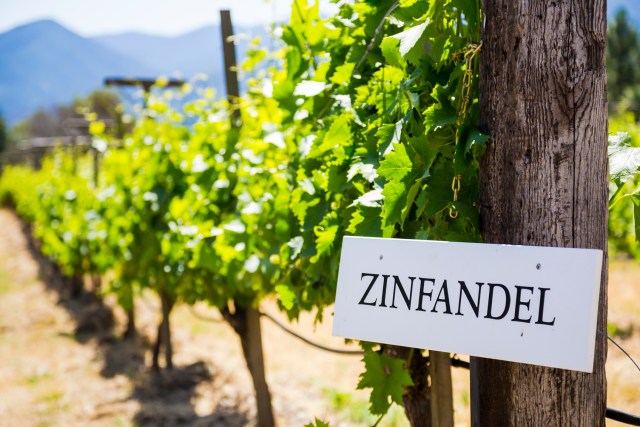It makes sense that Zinfandel has gained a reputation as California’s “heritage grape.” For many years, Zinfandel’s exact origins remained a mystery, or, as Jancis Robinson calls it, “a romantic thriller.” The red grape seemed to have made the trek and set fresh roots in the Golden State in conjunction with the forty-niners seeking their fortune in gold. Here, when the search for treasure proved fruitless, settlers turned to farming — and the Zinfandel grape thrived more than the Gold Rush ever could. Fields of vines flourished throughout the Sierra Foothills, and wine — namely jug wine — became a household staple and a new California industry.
With no known parentage and no knowledge of how the red wine grape arrived in the States in the first place — Zinfandel became California’s “wine child.”

It wasn’t until the 1990s, once genetic testing became fully developed, that the connection between the Zinfandel grape and what Italians call Primativo was made. Indeed, this made sense — there was a strong influx of Mediterranean settlers during the Gold Rush era. But, scientists had to ask, did the California settlers send clippings to Italy or did Italian farmers send their vines to the new world? Which came first?
Just a few years following this discovery, the wine world learned the answer: Neither. Croatian viticultural researchers, working alongside scientists at UC Davis, discovered a nearly extinct grape variety on the island of Kaštela in Croatia called Crljenak Kaštelanski (translation: “red grape of Kaštela”). After more extensive DNA tasting, they discovered this obscurity to be identical to Zinfandel.
Of course by this time Zinfandel had become so common in California, it had become, what Jancis Robinson refers to as a “sort of home-grown weed.”
The popularity of Zinfandel — certainly California-based Zinfandel — has had its up and downs. With the popularity of White Zinfandel — a fruity, often sweet pink wine — Zinfandel seemed to have gained a rep as a “lower tier” wine. Indeed, the grape “can” grow in pretty much any part of California, but just like other varietals, there are certain regions that are better suited than others.
The truth is, Zinfandel actually does grow a bit like a weed. Unless pruned regularly, it tends to “over-bud” as it were, resulting in highly concentrated grapes. (And can actually make for good late harvest or dessert-style wines.) These compacted, thin-skinned grapes are also quite prone to rot and raisining, so do require a lot of attention in the vineyard. Zinfandel thrives best in moderate, Mediterranean-like climates that enjoy cooling winds (to prevent mildew) and an even ratio of sun exposure (to prevent over-ripening) — not unlike that found along the Sierra Foothills where Zinfandel’s California history originated.
While the Sierra Foothills is where Zinfandel was “born,” celebrated it’s post-Prohibition renaissance, and, indeed, still thrives beautifully today, it’s not the only California region that the grape can call home. As California continues its grape-growing evolution, there are more areas being discovered that can take care of its heritage grape.
Let’s take a tour of some of California’s best Zinfandel-producing regions. (Links will become live as reviews are posted.)
Grgich Hills 2013 Estate Zinfandel
Sunce 2013 Catitch Vineyard Zinfandel
Pazienza 2015 Ceja Vineyard Zinfandel
Pedroncelli 2015 Mother Clone Zinfandel
Terra d’Oro 2015 Deaver Vineyard Zinfandel
More Info: For a full list of Zinfandels reviewed on this site, click here.
BriscoeBites officially accepts samples as well as conducts on-site and online interviews. Want to have your wine, winery or tasting room featured? Please visit the Sample Policy page where you can contact me directly. Cheers!

